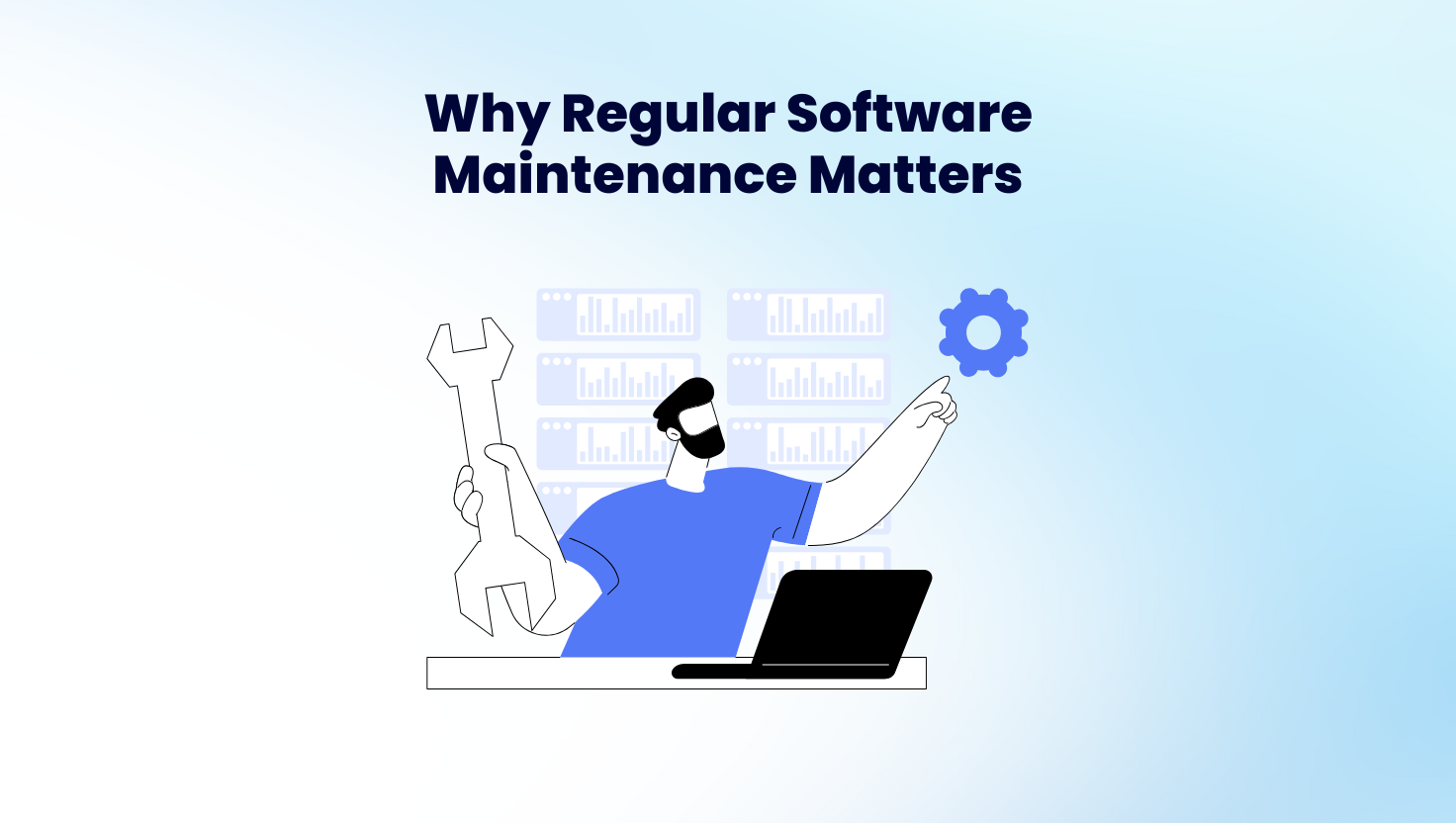
19 Mar The Importance of Regular Software Maintenance and Updates
Software is the backbone of modern businesses, supporting critical operations, customer interactions, and overall efficiency. However, neglecting software maintenance can lead to security risks, decreased performance, and costly downtime. Regular updates and maintenance are essential to keeping software secure, efficient, and aligned with technological advancements.
This article will explore the importance of software maintenance, different types of maintenance, best practices, and how businesses can benefit from a proactive software maintenance strategy.
Why Regular Software Maintenance is Essential
Many businesses view software as a one-time investment, but ongoing maintenance is crucial for long-term reliability and efficiency. Without regular updates, software can become outdated, vulnerable to cyberattacks, and incompatible with newer technologies.
1. Enhancing Security and Protecting Data
Cybersecurity threats are constantly evolving, and outdated software is a prime target for hackers. Regular security updates and patches help to:
- Fix vulnerabilities that could be exploited by malware, ransomware, or hackers.
- Ensure compliance with industry security standards such as GDPR, HIPAA, and PCI-DSS.
- Protect sensitive business data from breaches and unauthorized access.
2. Improving Software Performance
Over time, software can slow down or become inefficient due to outdated code, memory leaks, or inefficient algorithms. Regular maintenance helps to:
- Optimize software speed and efficiency.
- Fix bugs that cause unexpected crashes or errors.
- Ensure smooth operation across multiple devices and platforms.
3. Ensuring Compatibility with New Technologies
Technology is rapidly evolving, and businesses must ensure their software remains compatible with new operating systems, browsers, and third-party services. Maintenance ensures:
- Seamless integration with new APIs and cloud platforms.
- Support for modern hardware and software infrastructures.
- An enhanced user experience with the latest UI/UX trends.
4. Enhancing User Experience
Customers expect fast, intuitive, and seamless interactions with business software. Regular updates help:
- Fix UI/UX inconsistencies for a smoother user experience.
- Reduce app crashes and improve response times.
- Introduce new features that align with customer needs and feedback.
5. Reducing Long-Term Costs
Neglecting software maintenance can lead to:
- High emergency repair costs when software malfunctions.
- Lost productivity due to downtime and inefficiencies.
- Expensive overhauls instead of gradual, cost-effective improvements.
Types of Software Maintenance
Software maintenance is not just about fixing bugs—it involves continuous improvements, security patches, and performance optimizations. Below are the four main types of software maintenance:
1. Corrective Maintenance
Addresses software errors such as:
- Bugs or malfunctions affecting performance.
- Crashes and system failures.
- Security vulnerabilities requiring immediate fixes.
2. Preventive Maintenance
Proactively ensures long-term stability by:
- Identifying and fixing potential issues before they cause problems.
- Optimizing system performance for better efficiency.
- Eliminating outdated or redundant code.
3. Adaptive Maintenance
Keeps software relevant and aligned with new technologies, regulations, and business needs by:
- Ensuring compatibility with newer hardware and software.
- Updating integrations with third-party tools or cloud services.
- Modifying the system to meet industry compliance standards.
4. Perfective Maintenance
Enhances software to improve user satisfaction by:
- Adding new features based on customer feedback.
- Improving user interface and experience.
- Refining code for better efficiency.
Best Practices for Software Maintenance
1. Schedule Regular Updates
Set up a maintenance schedule for:
- Bug fixes and security patches.
- Feature updates and enhancements.
- Performance tuning and optimizations.
2. Implement Automated Monitoring
Use monitoring tools to track:
- Performance issues and crashes.
- Security threats and unusual activities.
- Server load and response times.
3. Backup Data Before Updates
Always backup critical data before performing updates to:
- Prevent data loss in case of errors.
- Ensure quick recovery in case of rollback needs.
4. Conduct Security Audits
Regular security audits help:
- Identify vulnerabilities and security gaps.
- Ensure compliance with security regulations.
- Reduce risks of data breaches and cyberattacks.
5. Test Updates Before Deployment
Before rolling out any update, test it in a staging environment to:
- Check for compatibility issues with existing systems.
- Ensure smooth functionality before deployment.
- Minimize downtime risks during updates.
How PT. KDN Can Help
Software maintenance is a continuous process that requires technical expertise and proactive management. At PT. KDN, we offer comprehensive software maintenance services to ensure your business applications remain secure, up-to-date, and high-performing.
Our Services Include:
- Regular security updates and performance optimizations.
- Compatibility upgrades for the latest technologies.
- 24/7 monitoring and support to prevent downtime.
- Bug fixes and troubleshooting to ensure reliability.


Sorry, the comment form is closed at this time.